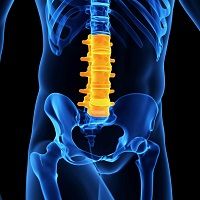Article
Secukinumab Effective for Treatment-Resistant Ankylosing Spondylitis
Author(s):
A Phase 3 trial of the monoclonal antibody secukinumab indicates it is an effective treatment for patients with ankylosing spondylitis (AS) incompletely treated by standard therapy, according to data presented at the 2014 American College of Rheumatology meeting.

A Phase 3 trial of the monoclonal antibody secukinumab indicates it is an effective treatment for patients with ankylosing spondylitis (AS) incompletely treated by standard therapy, according to data presented here at the American College of Rheumatology meeting.
Treatment over 16 weeks indicated that both low-dose and high-dose secukinumab were superior to placebo, with 60% of patients receiving active treatment, versus 29% receiving placebo, improving the primary endpoint, a combination measure of pain, function, inflammation, and patient assessment, called the ASAS20. Results at 52 weeks were also superior to placebo.
“Results of treatment were rapid, significant, and sustained,” reported lead investigator Dominique Baetan, MD, PhD, Professor of Clinical Immunology and Rheumatology at the Academic Medical Center/University of Amsterdam in The Netherlands.
Clinically, AS is characterized by axial arthritis, osteoporosis, and vertebral fractures, as well as cardiovascular and pulmonary involvement. Treatments for AS include NSAIDs, selective COX-2 inhibitors, and anti-TNF-alpha agents. “We do not have effective disease-modifying treatments in this disease,” Baetan said.
Secukinumab targets interleukin-17A, which has been implicated in the pathogenesis of AS based on genetic and clinical evidence. Positive results from a recent Phase 2 trial of secukinumab in AS set the stage for the current trial.
In the Phase 3 trial, a total of 371 patients with active AS were randomized to receive intravenous placebo or 10 mg/kg secukinumab at baseline, week 2, and week 4, followed by subcutaneous placebo or 75 mg or 150 mg secukinumab every 4 weeks thereafter. Eligible patients were those with AS and a BASDAI (a self-reported disease activity index) score of 4 or more, whose disease was inadequately treated with standard therapy.
At 16 weeks, a positive ASAS20 response was seen in 59.7% of those on low-dose secukinumab, 60.8% of those on high-dose secukinumab, and 28.7% of those on placebo. Both active-treatment results were significant versus placebo.
“Improvement was very rapid,” Baetan reported, with a clear signal emerging as soon as 1 week after beginning treatment.
All secondary endpoints also favored active treatment, including improvement on the more stringent ASAS40 scale, high-sensitivity C reactive protein levels, and other clinical measures of disease activity.
After 16 weeks, those on placebo were re-randomized to one of the two active treatment arms, and all patients continued to receive subcutaneous injections at their assigned dose out to 52 weeks. “Benefits were maintained and perhaps slightly increased” over the long term, said Baetan, with the higher dose providing better sustained improvement than the low dose. “For this indication, 150 mg is likely to be the recommended registration dose.”
The safety profile of secukinumab was very good, he said. At 16 weeks, adverse events were experienced by 67%, 70%, and 56% of patients in the low-dose, high-dose, and placebo groups respectively. Significant adverse events occurred in 1.6%, 2.4%, and 4.1%
“All thesedata indicate that secukinumab is effective in ankylosing spondylitis,” Baetan concluded. He noted the same drug is being tested in psoriasis. Secukinumab is produced by Novartis, which sponsored the trial. Other pharmaceutical companies are also testing anti-IL-17A monoclonal antibodies for inflammatory conditions, but none are as far along in trials as secukinumab, Baetan said.
“I think these data are very exciting,” commented Eveline Wu, MD, pediatric rheumatologist at the University of North Carolina School of Medicine. “The IL-17A pathway has been shown to be involved in the pathogenesis of this disease, so a drug that targets this pathway is ideal.”





